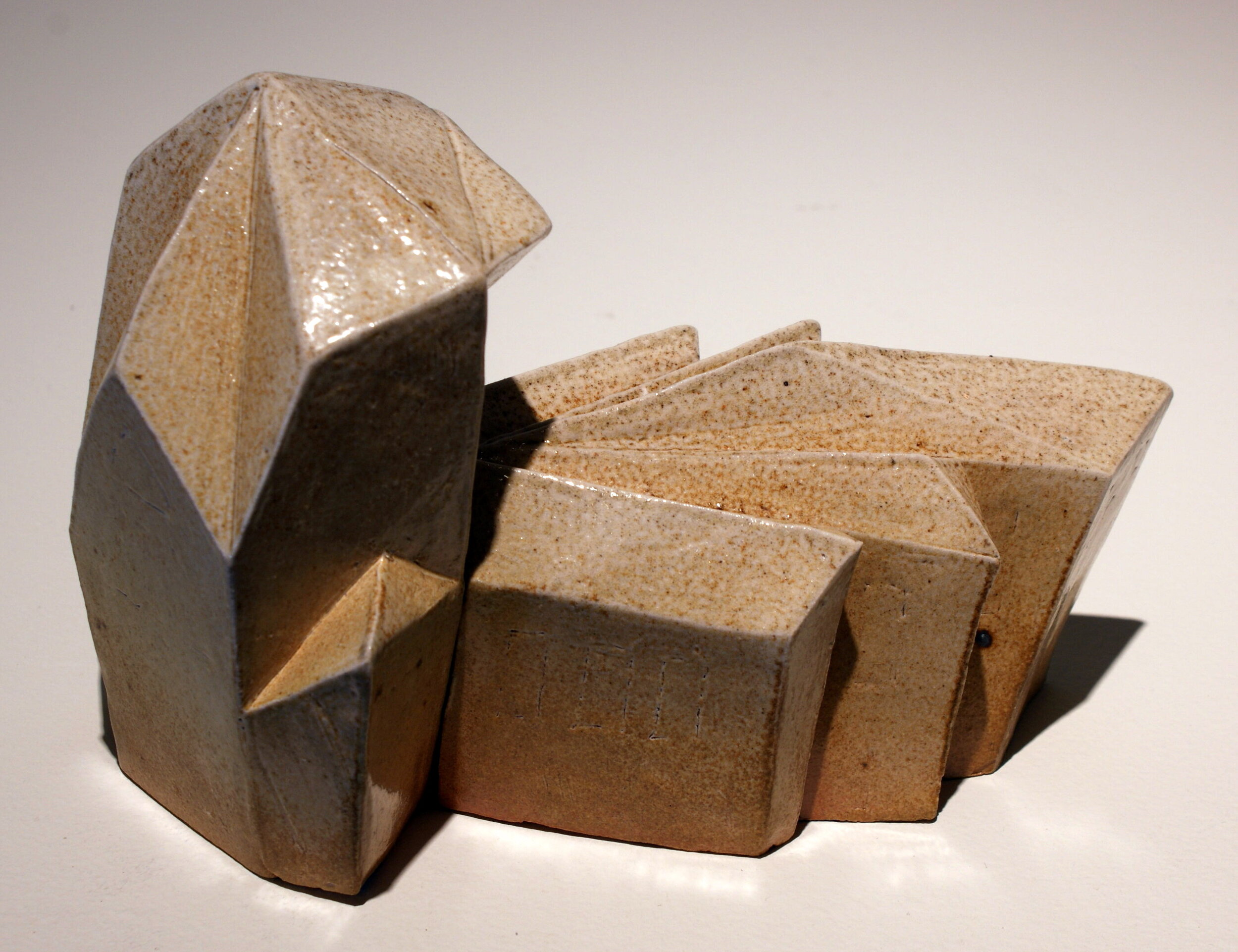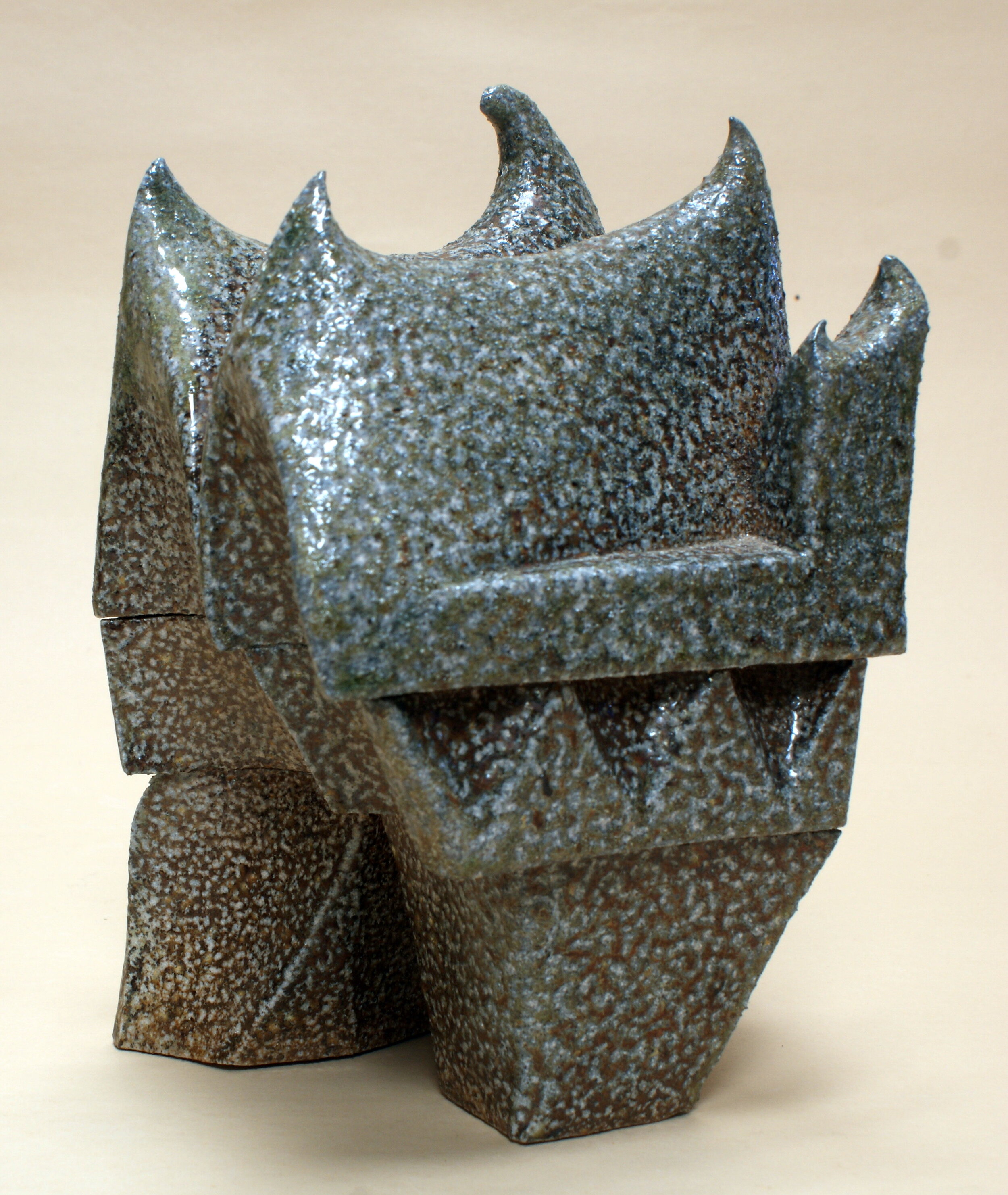These Hale Gathering Places are inspired by architectural form. It is exciting for me to work with a “man-made” aesthetic, after many years of engaging with organic form and drawing inspiration from nature. I have always delighted in bringing forms to life, imbuing them with a dynamic quality that hopefully animates my work. I am enjoying challenging myself to bring that same vitality and movement to architectural forms.
I initially enjoyed constructing fairly rigid, straight-walled structures (the rectilinear forms traditionally associated with architecture). Now I’m exploring more extravagant, dynamic, curvilinear forms with irregular angles, undulating walls, and swooping roofs, that combine both the primitive and the modern, and merge my long held interest in organic form with this newer architectural focus.
Many of my ceramic sculptures begin as a small clay study (or maquette) scaled up to become the final work.
Most of my work is fired in a salt kiln, where I hold the temperature at 2350 degrees Fahrenheit for two hours, while I gradually toss ten to fifteen pounds of salt into the gas flames, which vaporizes the sodium and distributes it throughout the kiln. The sodium melts the silica in the clay and transforms the surface of all the pieces into a glaze. This salt glaze yields an “orange peel” texture. Loading the kiln is also part of the design of each sculpture, as I decide which surface will face the flame and therefore receive the most glaze and the most “orange peel.”
Some pieces are burnished (polished by rubbing) and then pit fired, giving them markings from the flames and copper in pink, deep red, grey, and black hues.
Hale Gathering Places
Sizes vary from 6” in the smallest dimension to 28” in the longest dimension.































